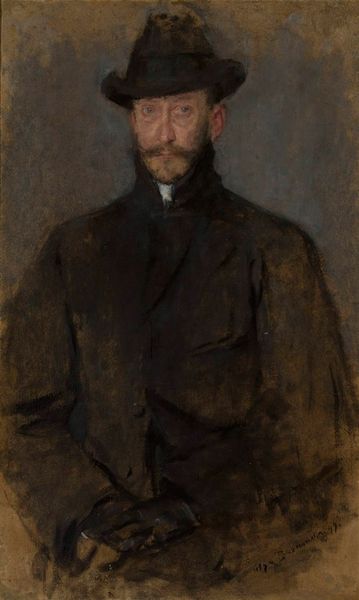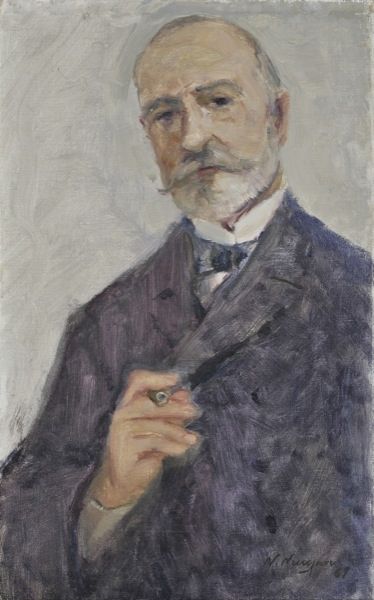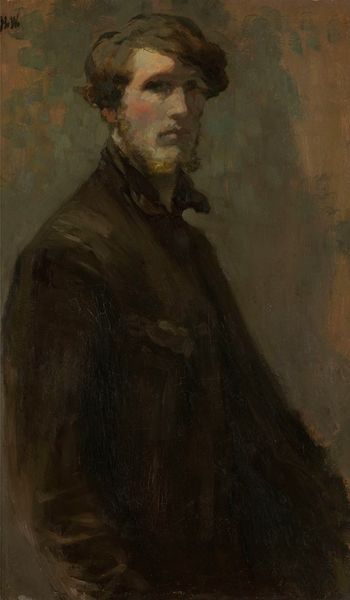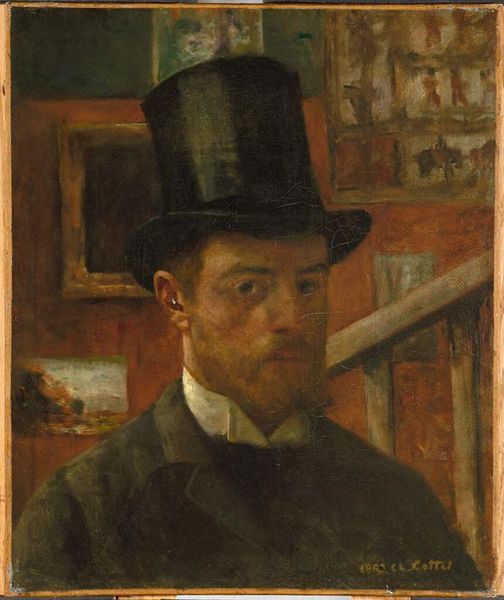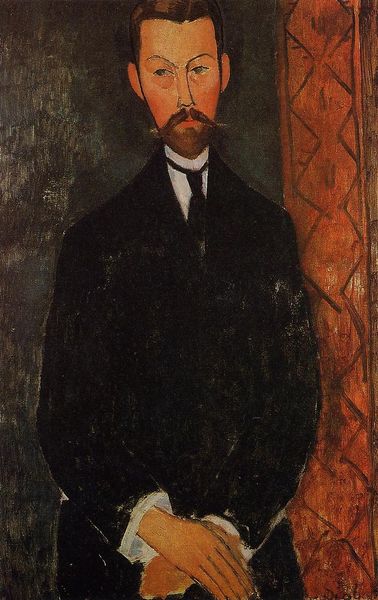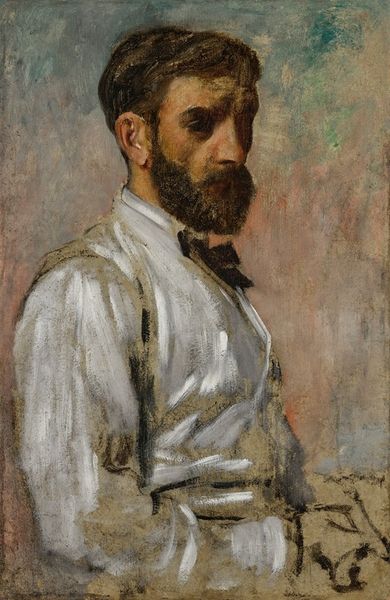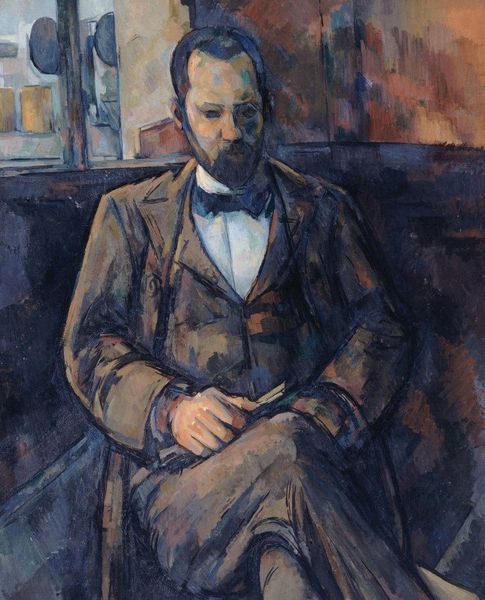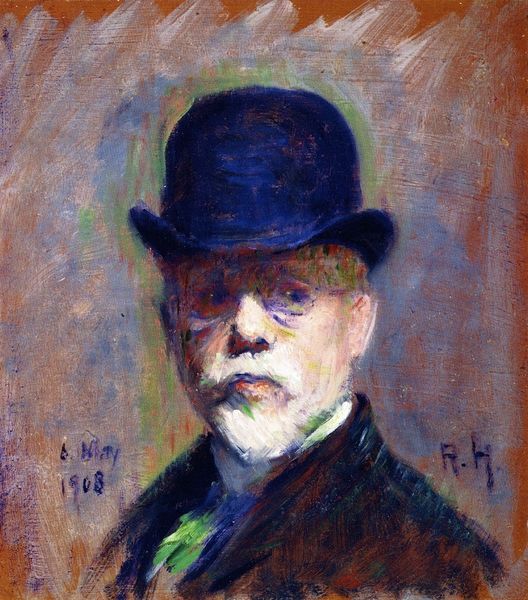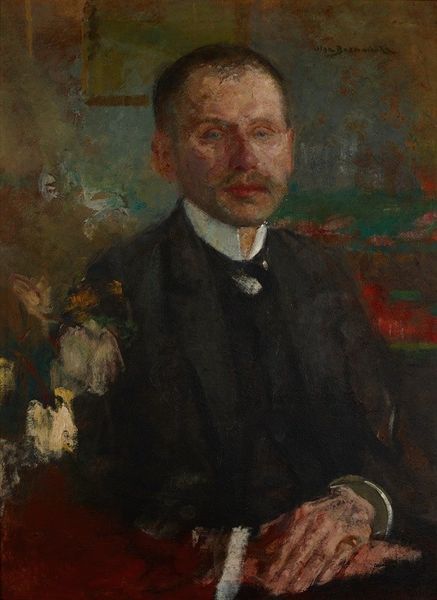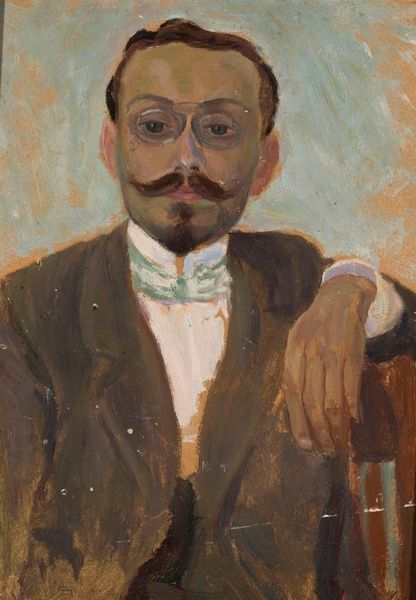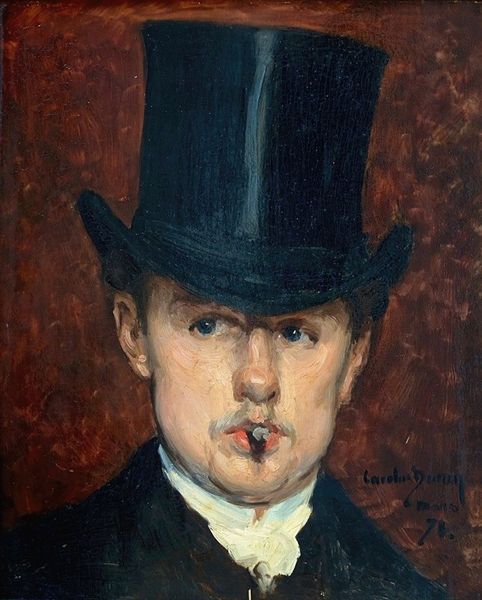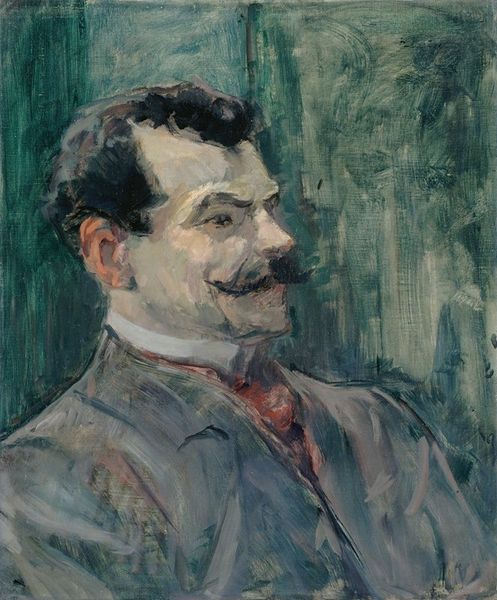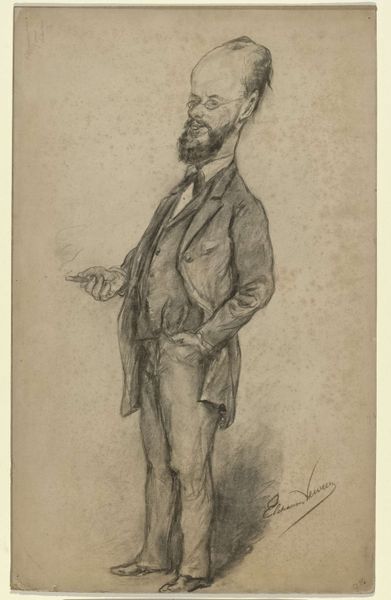
Copyright: Public Domain: Artvee
Editor: Here we have Edvard Munch’s “Julius Meier-Graefe,” an oil on canvas painted in 1894. I’m immediately struck by the somber mood, especially conveyed through the dark, muted colors. What do you see in this piece, beyond the surface level? Curator: This portrait serves as a fascinating window into the artistic and intellectual circles of the late 19th century. Notice the top hat and the somewhat formal attire. These are potent symbols of status and belonging to the bourgeoisie. However, consider the sitter's intense gaze, almost confrontational. What cultural narratives might Munch be playing with here? Editor: Are you saying that Munch might be commenting on the societal expectations of the time? Curator: Precisely. The cigarette, for instance, acts as a symbol of bohemianism, intellectualism, or even decadence. By combining these contrasting symbols, Munch evokes the anxieties and complexities beneath the surface of a seemingly proper society. The blurred, almost ghostly, background hints at something unstable, unresolved. It evokes questions around authenticity, rebellion, and the shifting values within European society. Editor: I hadn’t considered how all those symbols worked together. I just saw a portrait. Curator: That’s the magic of Munch, isn’t it? He invites us to decipher these visual cues and think about how they resonate within a specific historical and psychological context. What new meanings might such imagery create today, a century and a half later? Editor: It makes me think about the performative aspect of identity, even now. Thank you, this has been really insightful.
Comments
No comments
Be the first to comment and join the conversation on the ultimate creative platform.
